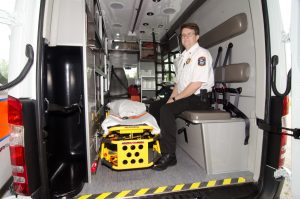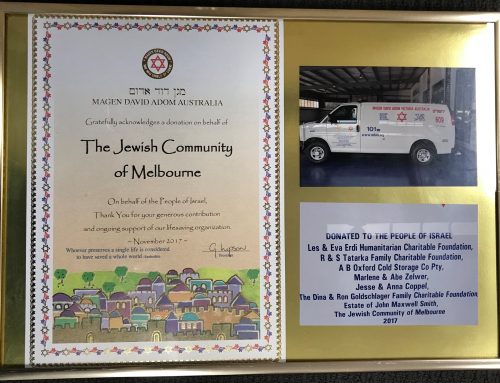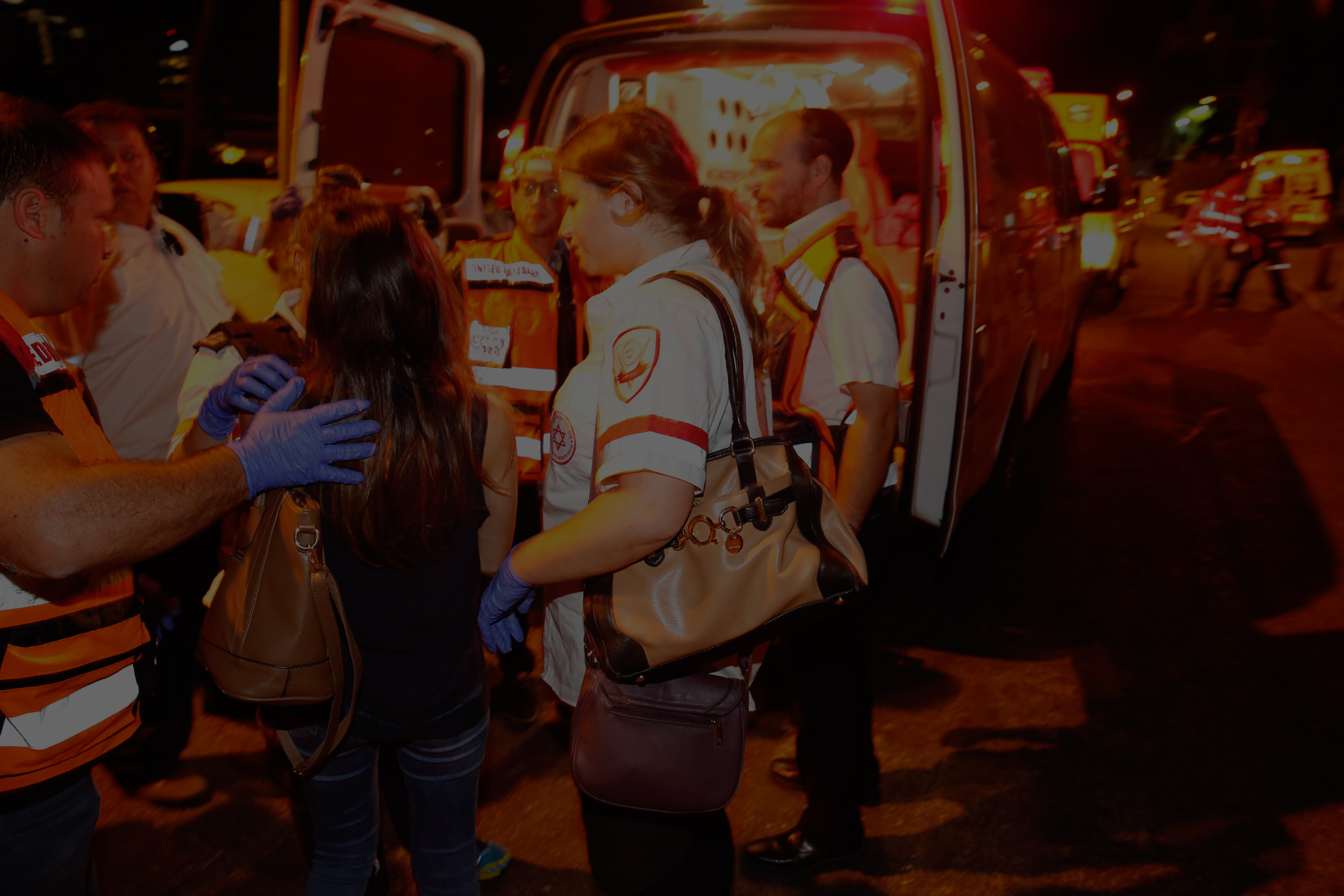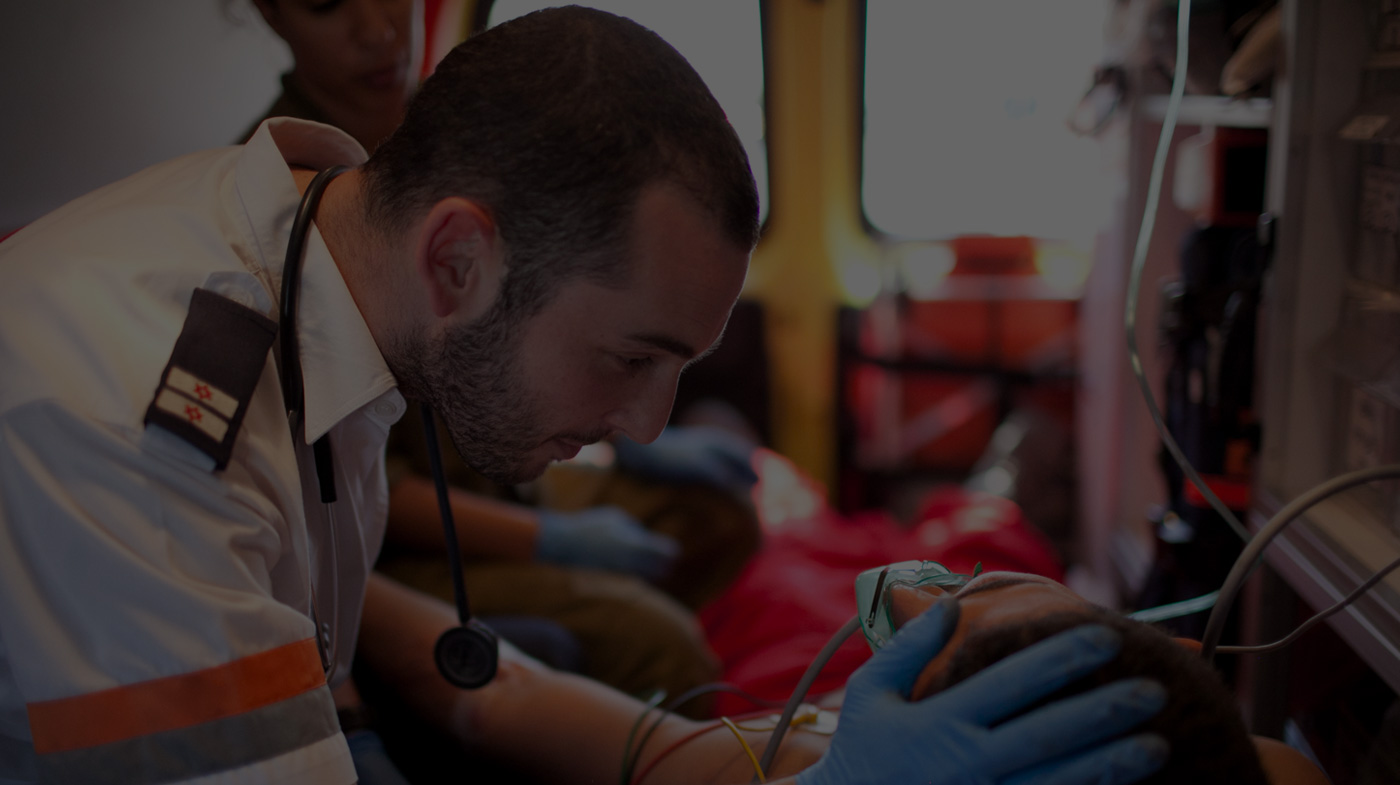Magen David Adom establishes protocols to provide awaiting doctors with comprehensive patient data before ambulances arrive to hospital, eliminating need for some diagnostic tests and enabling physicians to begin lifesaving interventions immediately.
 Jerusalem (March 28, 2017) — Israel’s national EMS service has dramatically reduced the time before stroke victims receive potentially lifesaving hospital treatment by sending comprehensive patient data to the hospital ahead of time, alerting hospital physicians about patients en route to their neurology departments, and making the relatively brief time patients spend on ambulances more productive for diagnostics.
Jerusalem (March 28, 2017) — Israel’s national EMS service has dramatically reduced the time before stroke victims receive potentially lifesaving hospital treatment by sending comprehensive patient data to the hospital ahead of time, alerting hospital physicians about patients en route to their neurology departments, and making the relatively brief time patients spend on ambulances more productive for diagnostics.
In a trial recently conducted by Magen David Adom (Israel’s national EMS organization) and Shaare Zedek Medical Center in Jerusalem, the average time in which stroke patients begin receiving lifesaving hospital interventional treatment was reduced from 54 minutes to barely 24 minutes, cutting the time by more than half. As a result of this dramatic finding, the new protocol for stroke victims will be introduced to all Israeli hospitals within the next year.
Magen David Adom has been using a similar protocol for heart-attack patients for months with similarly impressive time reductions as well, including many patients who were taken straight to catheter labs upon arrival, having already been diagnosed en route with arterial blockages.
A key component of the new stroke protocol, Magen David Adom officials say, has been the use of technology. This includes smartphone and tablet apps developed by MDA in-house that alert on-call neurologists about incoming patients and which provide the physicians with real-time patient data, including electrocardiograms, blood pressure, blood oxygenation levels, and documentation of early signs and symptoms of heart attack or stroke — all from the ambulance. This has enabled physicians to make en-route diagnoses, plan a preliminary course of treatment, and have patients taken straight to the neurology department, bypassing the emergency room, and shaving an average of 30 minutes from when the patient first arrives at the hospital to when initial interventions begin.
“When we’re talking about stroke and heart-attack patients, a significant time-savings can have a dramatic effect on — not just survival rates — but on the extent of recovery for those who do survive,” said Dr. Refael Strugo, chief medical officer for Magen David Adom in Israel.
“In critical cardiac and cerebrovascular events, it’s critical to begin treatment as soon as possible. However, there are limits to how much faster EMTs and paramedics can get patients to hospitals given the traffic of modern-day cities and other factors,” he said. “So the question for us became how can we make the time the patient spends on the ambulance more efficient and productive in terms of providing the hospital with useful patient data while the patient is en route.”
Magen David Adom has used motor scooters, or what the organization calls Medicycles, for years, utilizing the vehicles to whisk first-responders through traffic to the scenes of medical emergencies, often arriving ahead of the organization’s ambulances to begin resuscitating, provide advanced medical treatment, or stabilize patients. With more than 300 of these vehicles now in use by Magen David Adom, the organization is often able to reduce the time it takes to initially reach a medical emergency patient by an average of three minutes. However, in terms of providing definitive critical care to a patient, Strugo says, the new protocols represent an even more significant time-savings and ultimately could have a greater impact on the outcomes of cardiac and stroke patients.
As for the technology and the phone apps used in the protocol, it was developed by Magen David Adom over the past few years by a team of more than 30 full-time software developers that the EMS organization has on staff, according to MDA’s chief information officer, Ido Rosenblat. It is believed to be among the biggest in-house software development teams employed by an EMS organization anywhere.
“Ultimately, the apps are only as good as the number of lives it helps save,” Rosenblat said, so plans call for making the technology available to other EMS organizations working with their local hospitals around the world.
“This protocol — and the technology we’re using — is already saving lives in Israel,” Dr. Strugo added. “If it can save lives somewhere else in the world too, so much the better.”










